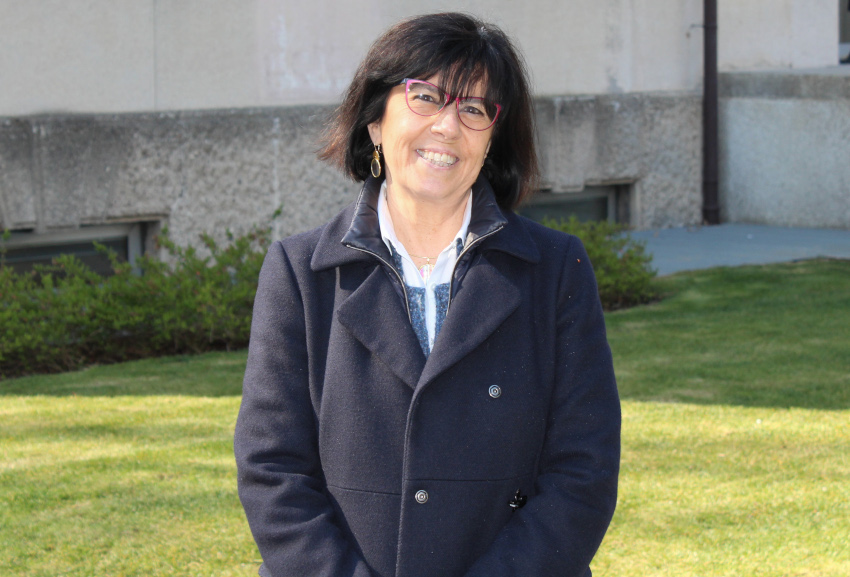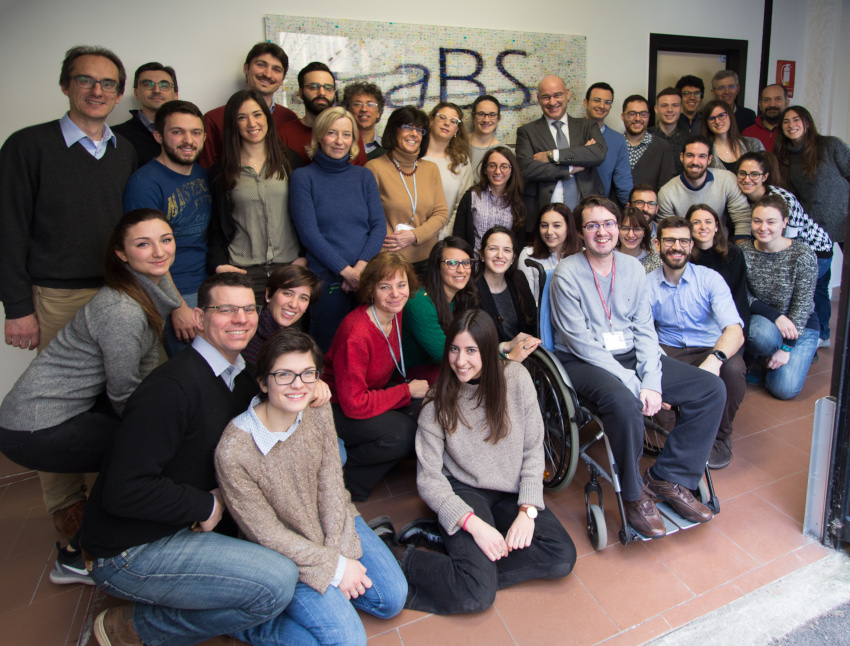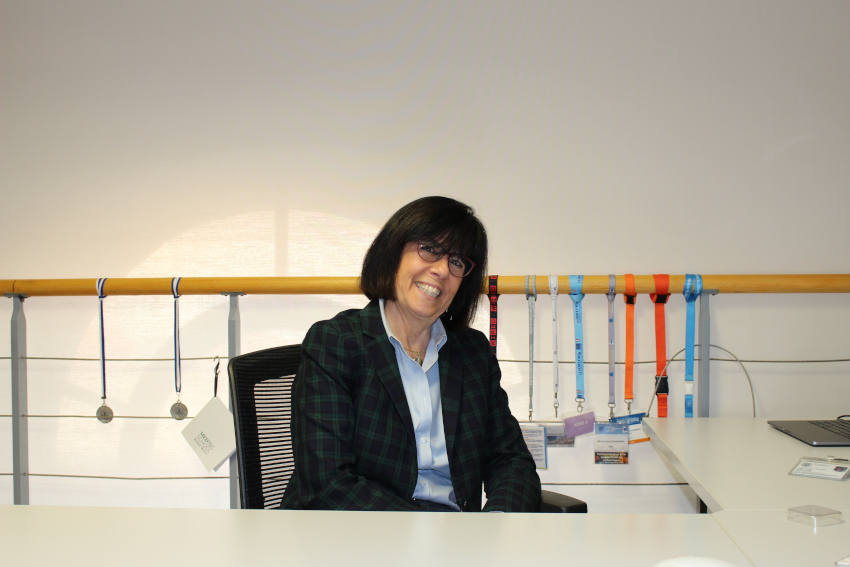In our March survey on the gender gap, we visited LaBS, on of the laboratories at Politecnico where the ratio between women and men is fairer. Together with the 8 bioengineering researchers we interviewed here, Professor Maria Laura Costantino, head of the laboratory, talked about herself for Frontiere tracing a comparison between past, present and future.

Dear Research,
Today at LaBS, we welcomed the editorial team from Frontiere, who were writing an article on women and STEM. I involved the women researchers who were working in the laboratory today, and we had a very stimulating chat, discussing our passion for research, private life and dreams for the future. Looking at them gathered around that table, I felt proud of them, and I remembered how far I have come since I was in their place, and how much there is still to be done.
As you may know, I enrolled in Mechanical Engineering at the Politecnico in 1976. At the time there was still the single university system, so it was five years under the annual system, and those enrolled in Mechanical Engineering followed the first three years together with those enrolled in Civil Engineering. In my section, of about 350 students, there were just 3 women, of which 2 enrolled in Civil Engineering.
I initially intended to study in the energy field. In reality, having reached the fourth year, when we had to choose our field of study, some of my fellow students suggested bioengineering, which at the time was a completely innovative discipline and unfamiliar even to us students.
There were four of us. We graduated in 1982. My three (male) colleagues chose to work in the typical engineering sectors, while I decided to stay at the Politecnico, devoting myself to research in Biomedical Engineering.
My first year of work was supported by scholarships. The first activities entrusted to me by my Tutor included the design and organisation of the first Biomechanics Research Laboratory, which, once established, was later merged with the LaBS.
My studies and research have always concerned the modelling and experimental study of the fluid dynamics of the cardiovascular system, internal organs (heart, lung, kidney, pancreas, etc.), the design and validation and management of life support systems. and the personalization of clinical treatments.
This is a field of great importance, which still fascinates me, which combines research in the field of Biomedical Engineering with a continuous dialogue with the hospital reality through collaboration with different medical specialists and contact with patients. This enables us to develop systems and solutions that are increasingly in line with the ever-changing needs of modern medicine.
In 1983, PhD courses in many scientific disciplines began in Italy. I was accepted, with 6 colleagues from other universities in Northern Italy, onto the PhD course in Bioengineering. Of 7 accepted, 2 were women.
Once I obtained the title of PhD, I continued my university career until I became Full Professor in 2006. The expertise matured during the many years of intense scientific activity, applied research, and interaction with the clinical world, has contributed significantly to the establishment, in 2019, of the MEDTEC School Master’s Degree Course, of which I am honoured to be President.
This course, established jointly by Humanitas University and Politecnico di Milano, supplements and enhances professional surgical skills with skills in Biomedical Engineering and, at the end of the course, students are awarded a Master’s Degree in Medicine and Surgery and Bachelor’s Degree in Biomedical Engineering. It is interesting to note that there is no gender gap among MEDTEC students (now over 200), insofar as the number of women and men is substantially the same.

My journey has been a long one, full of satisfaction and recognition. However, the difficulties I encountered, especially at the beginning, must not be forgotten.
I am referring in particular to the “gender gap” that I have experienced many times. As I said earlier, when I enrolled at Poli in 1976, I was the only female student on my mechanical engineering course.
So, more than a gender gap, at the time it was more like a chasm.
I remember in the second year, one professor asked me: “But why are you doing mechanical engineering? Does your dad have a business?” It was assumed at the time that a female engineer would not find a job anywhere except in her daddy’s company.
After I graduated, and even now, I receive emails from people who address me “Signora” or “Gentile signora Maria” [TN: instead of using her professional title of engineer, an established Italian formality for people who hold academic degrees]. These are linguistic indicators of stereotypes that are unfortunately still deeply rooted.
But despite this, I have never let it get to me, thanks also to my determined and optimistic character.
This positive approach to life led to my marriage at the beginning of my fifth year at university (I still had seven exams and my thesis to go) and to the birth of my first child during the first year of my PhD.
Bear in mind that, at the time, there was no maternity leave for PhD students (perhaps female students were not envisaged). As you can easily imagine, this implied a series of difficulties that I overcame thanks to my young age (26), my determination and the support of my family and my Tutor.
Speaking of how hard it was at the time to imagine that a woman could hold a professional role in STEM disciplines, I’ll tell you what happened to me when I arrived at a well-known clinic in Milan, to give birth. During admission, the doctor asked me what my job was. “Engineer,” I answered, to which, without looking up, he responded: “I asked you what your job was, not your husband’s!” I’ll leave you to comment on that one.
I am not going to tell you about all the other unpleasant situations I experienced during certain job interviews I attended while waiting for the results of my admission to the PhD.
But back to today, I ask myself whether the situation has improved for female researchers. Fortunately, yes, a lot. However, I must admit that there are still some disparities. More than a “gender gap”, I would prefer to describe it as gender disparity, which must absolutely be remedied, although it is better that it used to be.

In spite of everything, in the end you always meet a huge number of intelligent, fair and mindful people, who don’t care whether you are a woman, a man or anything else. The important thing is how you are as a person, regardless of your gender.
To a woman who asks me for advice about her intention to embark on a STEM career, I would definitely recommend it, because it is wonderful and rewarding. It offers immense satisfaction, even if at times accompanied by bitter disappointments, which, however, must not be reason for defeat.
In Biomedical Engineering, the situation is certainly more balanced, because there have long been more women than in other Engineering Courses.
However, there is something that still bothers me. Some female students tell me that they have chosen Biomedical Engineering because they believe it is “easier and more tame”.
I find this position completely wrong. However, I am aware that this may also depend on the inability to grasp the complexity of applying engineering methods to systems that involve intimately the health and well-being of those who use them.
The task of the Biomedical Engineer, man or woman, is to understand in depth the needs and problems to be addressed (expressed by the medical component) and then design the most suitable solutions and systems for their resolution. Therefore, a typical engineering approach, integrated by the awareness of the therapeutic purpose of your work.
When I think of LaBS, I consider the fact that there are so many female researchers to be a great bonus.
Women active in the STEM professions, and in particular in Engineering, obviously have the same skills and abilities as their colleagues of different genders, but with a different vision.
This is the benefit of working groups open to all members. In this way, professional challenges are faced from different points of view, understanding their complexity in the best possible way and identifying the best solutions, through discussion and comparison.
Based on my long professional activity, during which I met hundreds of students (with women in ever increasing numbers) and I saw, and also contributed, to the evolution of women in the STEM disciplines, I can say that to completely eliminate the “gender gap”, in addition to the obvious and complete elimination of the entirely instrumental and sometimes corporate hurdles still in place for women today, we also need to continue to value gender differences in all areas.
This is, on the other hand, the true essence of scientific research applied to problem solving, that is, of Engineering.
Dear Research, we will meet again in the laboratory to continue our journey together, which has still a long way to go.
Yours,
Maria Laura Costantino
